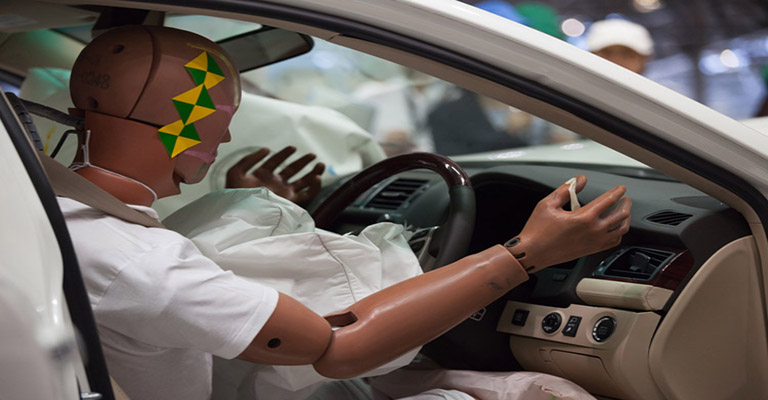When outfitting a testing laboratory or design workshop, it is important to make sure that your engineers and designers have access to the equipment they need that will help them properly test prototypes and make informed design decisions. In order to capture data that will support evidence-based decisions, your pressure imaging sensors must be carefully selected to accurately represent the pressure and contact area of the interface being tested.
This isn’t always a straightforward task; the types of pressure sensors you will require depends heavily on your specific industry and application. Sensor attributes that you should take into account include:
CONFORMABILITY
If you are measuring a pressure interface that has a contoured surface, the sensor must be thin and flexible to “fit” that surface, otherwise valuable data will be missed.
CALIBRATION RANGE
The sensor’s accurate range needs to be consistent with the types of pressures expected, in order to minimize measurement error. For example, you would not use a bathroom scale to weigh a few grams of baking ingredients.
SPATIAL RESOLUTION
The size of the individual sensor elements in the array must be adequate to capture all of the surface features of interest.
FREQUENCY RESPONSE
During high-speed events, the pressure sensor must respond fast enough to capture accurate pressure data. During impact events, pressures are applied in milliseconds.
RECORDING FREQUENCY
Tor dynamic interfaces, the sensor and electronics must be able to scan and record fast enough to capture the pressure profile. To capture interface pressure during airbag deployment, 2000 fps is required. However, to evaluate the comfort of a car seat during drive testing, 60 fps may be adequate.
REPEATABILITY
The sensor measurements must be consistent over multiple measurements. Most research studies involve a large dataset collected over multiple trials, and a sensor with large drift will introduce significant error into your data.
After 20 years of supplying industry leaders with pressure sensing technology, here are some basic guidelines you can apply to your applications:
HIGH SPEED / IMPACT EVENTS
-
Frequency Response and Recording Frequency are crucial to collecting high-resolution data
-
Repeatability is important
-
Make sure that the sensor’s calibration range can handle the high pressures of an impact event
HUMAN BODY PRESSURES
-
Measuring human / environment interfaces often requires multiple trials with many different subjects.
-
Repeatability is extremely important in these situations.
-
Nothing about the human body is flat.
-
Having a pressure imaging sensor that can conform to the contours of your subjects and still collect accurate data is a key requirement.
Making sure that your engineers have the proper equipment during their design phase will lead to better data, better decisions, and ultimately, higher-quality products. If you are selecting pressure sensors for a specific application, please contact one of XSENSOR’s engineers for some expert guidance.


